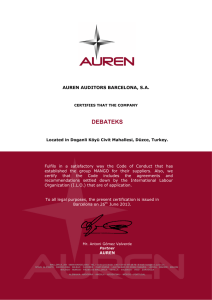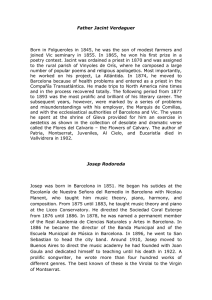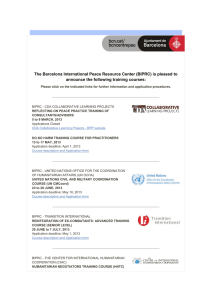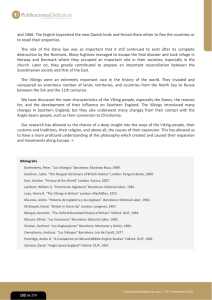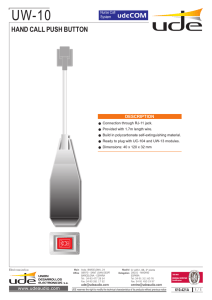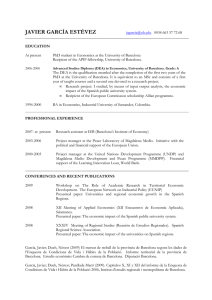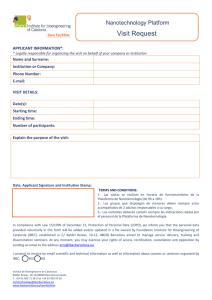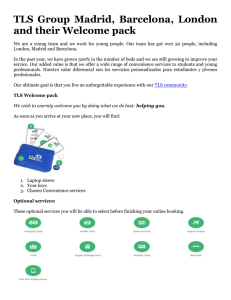Level A Spanish for Everyday Situations
Anuncio
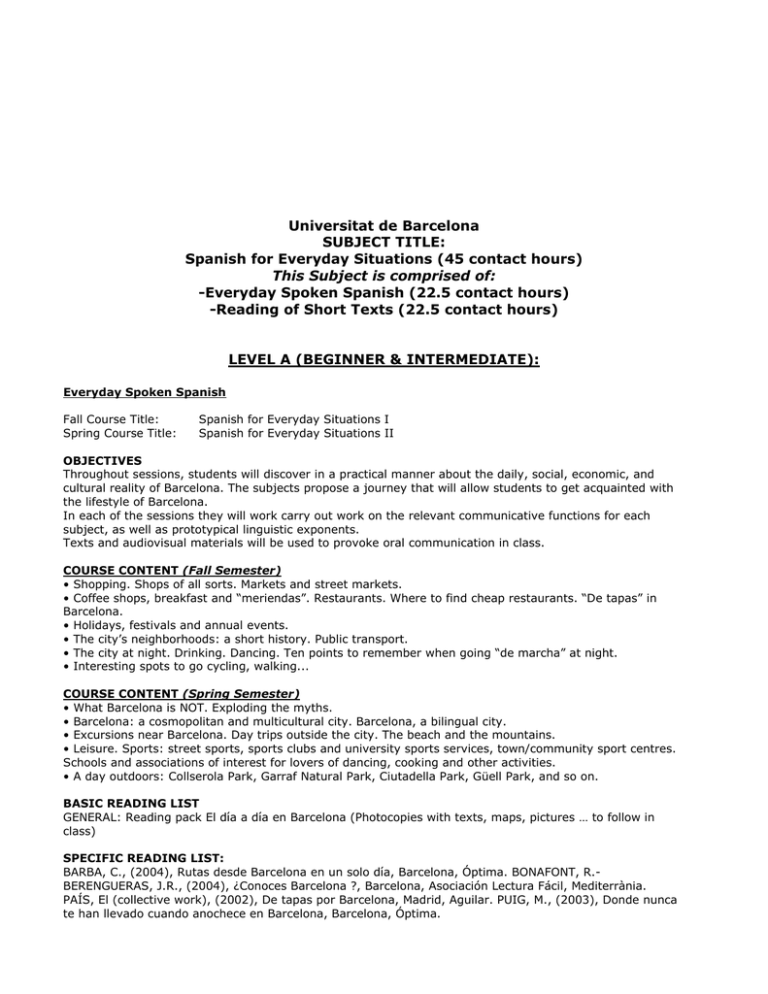
Universitat de Barcelona SUBJECT TITLE: Spanish for Everyday Situations (45 contact hours) This Subject is comprised of: -Everyday Spoken Spanish (22.5 contact hours) -Reading of Short Texts (22.5 contact hours) LEVEL A (BEGINNER & INTERMEDIATE): Everyday Spoken Spanish Fall Course Title: Spring Course Title: Spanish for Everyday Situations I Spanish for Everyday Situations II OBJECTIVES Throughout sessions, students will discover in a practical manner about the daily, social, economic, and cultural reality of Barcelona. The subjects propose a journey that will allow students to get acquainted with the lifestyle of Barcelona. In each of the sessions they will work carry out work on the relevant communicative functions for each subject, as well as prototypical linguistic exponents. Texts and audiovisual materials will be used to provoke oral communication in class. COURSE CONTENT (Fall Semester) • Shopping. Shops of all sorts. Markets and street markets. • Coffee shops, breakfast and “meriendas”. Restaurants. Where to find cheap restaurants. “De tapas” in Barcelona. • Holidays, festivals and annual events. • The city’s neighborhoods: a short history. Public transport. • The city at night. Drinking. Dancing. Ten points to remember when going “de marcha” at night. • Interesting spots to go cycling, walking... COURSE CONTENT (Spring Semester) • What Barcelona is NOT. Exploding the myths. • Barcelona: a cosmopolitan and multicultural city. Barcelona, a bilingual city. • Excursions near Barcelona. Day trips outside the city. The beach and the mountains. • Leisure. Sports: street sports, sports clubs and university sports services, town/community sport centres. Schools and associations of interest for lovers of dancing, cooking and other activities. • A day outdoors: Collserola Park, Garraf Natural Park, Ciutadella Park, Güell Park, and so on. BASIC READING LIST GENERAL: Reading pack El día a día en Barcelona (Photocopies with texts, maps, pictures … to follow in class) SPECIFIC READING LIST: BARBA, C., (2004), Rutas desde Barcelona en un solo día, Barcelona, Óptima. BONAFONT, R.BERENGUERAS, J.R., (2004), ¿Conoces Barcelona ?, Barcelona, Asociación Lectura Fácil, Mediterrània. PAÍS, El (collective work), (2002), De tapas por Barcelona, Madrid, Aguilar. PUIG, M., (2003), Donde nunca te han llevado cuando anochece en Barcelona, Barcelona, Óptima. PUIG, M., (2005), De compras por las tiendas más originales de Barcelona, Barcelona, Óptima. QF (Guía), (2005), COMER, BEBER Y DIVERTIRSE, Barcelona, Guías QF?, La Vanguardia. RBA (Guía), (2004), BARCELONA PARA ESTUDIANTES EXTRANJEROS, Barcelona, RBA. Reading of Short Texts Fall Course Title: In a few words: Commercials, Posters, Graffiti and Short Stories I Spring Course Title: In a few words: Commercials, Posters, Graffiti and Short Stories II OBJECTIVES - To improve linguistic competency and, more specifically, the reading competency of students through the comprehensive, critical and enjoyable reading of brief Spanish texts which belong to different textual typologies. - Starting with an interactive reading of the text, to reach those strategies which allow for a construction of meaning of the said text, in as wholesome a way as possible. COURSE CONTENT Reading as the construction of meaning: . Reading and commentary of adverts: persuasion . Reading and commentary of posters: information . Reading and commentary of graffiti: opinion . Reading and commentary of short-stories: narration. BIBLIOGRAPHY The corresponding class notebook for each term. ASSESSMENT During the course, students will be commenting on aspects of texts which will have been read. At the end of each term students will write a commentary about some of the texts they will have read previously.
